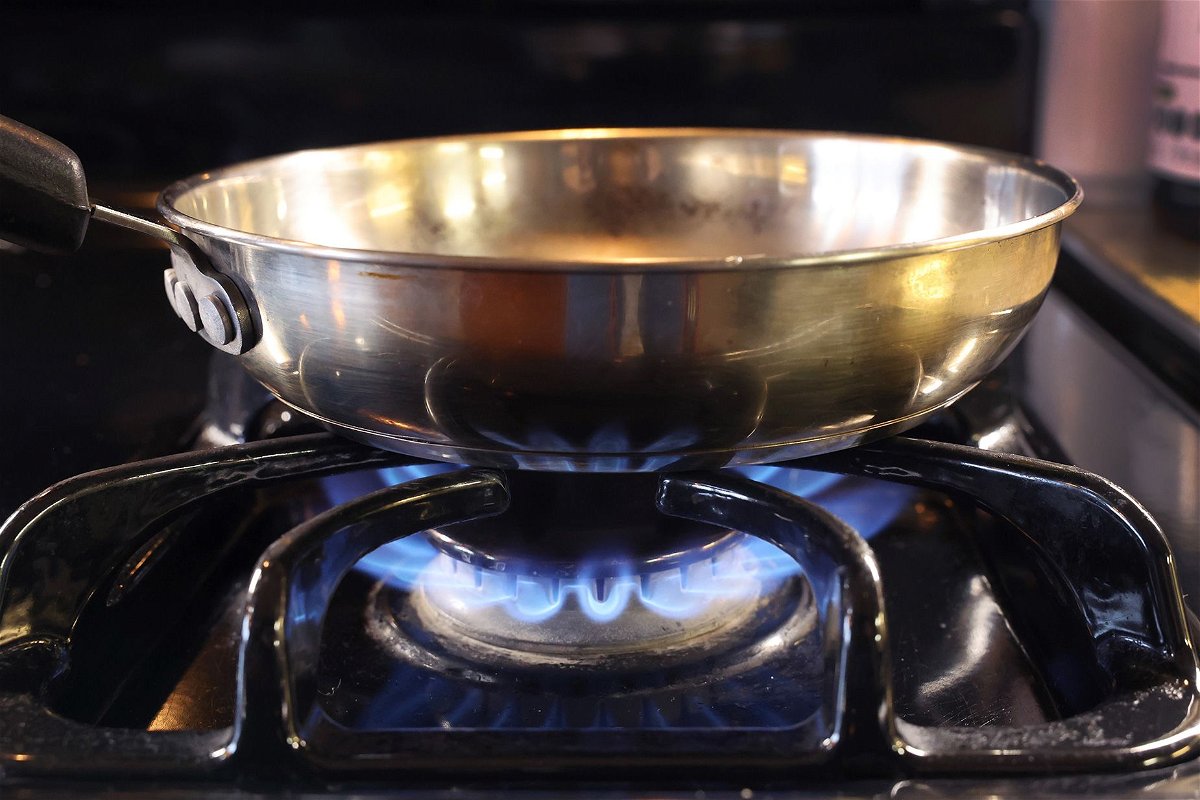Gas stoves expose millions in the US to unsafe limits of nitrogen dioxide, and disadvantaged communities face higher risk

Harmful levels of nitrogen dioxide from cooking on gas stoves can be found throughout the home
By Deidre McPhillips, CNN
(CNN) — Gas and propane stoves significantly increase exposure to nitrogen dioxide in rooms throughout the home, and these unsafe levels of exposure have had harmful effects on the health of tens of thousands of people in the United States, according to a new study.
The World Health Organization has set guidelines for exposure to various air pollutants, and the new research – published in the journal Science on Friday – found that people reach 75% of the suggested annual limit for nitrogen dioxide just by using a gas stove. Electric stoves, on the other hand, did not cause any emissions of nitrogen dioxide.
Breathing air with high concentrations of nitrogen dioxide can irritate the respiratory system. Short-term exposure can exacerbate respiratory diseases, while longer exposures can contribute to the development of conditions like asthma and increase susceptibility to respiratory infections.
“There really is no safe amount of exposure to these toxicants produced by gas or propane or any fossil fuel, outside or inside. We were not meant as a human species to be breathing these toxicants in,” Dr. Kari Nadeau, chair of the environmental health department at the Harvard T.H. Chan School of Public Health and co-author of the new study, said at a news conference about the research.
More than a third of households in the US – nearly 50 million – have a gas or propane stove, according to data from the US Energy Information Administration.
But size and layout of a home, ventilation and behaviors – such as cooking patterns – can affect levels of exposure to nitrogen dioxide from gas stoves, which leaves many disadvantaged communities at increased risk for the negative health effects.
People who live in residences that are less than 800 square feet are exposed to four times more nitrogen dioxide from gas stoves than people who live in residences that are larger than 3,000 square feet, according to the new study.
“Because of historical and present day discrimination, this disparity and exposure by housing size manifests as disparities and exposure by income and race and ethnic group,” Yannai Kashtan, a researcher with the Stanford Doerr School of Sustainability and lead author of the new study said at the news briefing.
For American Indian, Black and Hispanic people in the US, exposure to nitrogen dioxide exceeds the World Health Organization’s benchmark just from using a gas stove, excluding any contribution from outdoor air, the new research found. Exposure levels are 60% higher than average for American Indian people and 20% higher than average for Black and Hispanic people in the US.
The negative effects of exposure to nitrogen dioxide from a gas stove are not limited to those who spend the most time cooking or in the kitchen, the researchers found. In the bedrooms that were tested, concentrations of nitrogen dioxide exceeded the World Health Organization’s 1-hour exposure guideline within 25 minutes of cooking.
“The pollution we measure travels from the kitchen to distant bedrooms, and it travels far and fast,” said Rob Jackson, a professor of Earth system science at Stanford and senior fellow with the Stanford Woods Institute for the Environment and Precourt Institute for Energy who was the principal investigator for the new research. “It moves through the home very quickly. It doesn’t only reach our bedrooms quickly, it lingers in the air for hours.”
The cooks bear the greatest burden – which disproportionately affects women – but everyone in the home is in danger of breathing in pollution, he said.
For this study, researchers measured nitrogen dioxide concentrations and emissions in more than 100 homes across five states. They combined these findings with national demographic data to estimate exposures and potential impacts across the US.
Overall, they estimate that long-term exposure to nitrogen dioxide from gas stoves caused about 50,000 current cases of pediatric asthma in the US. That estimate grows to about 200,000 cases of pediatric asthma when factoring in other toxins released by the flames from gas stoves and short-term exposure to nitrogen dioxide. Also, the researchers estimate that about 19,000 premature deaths may be attributable to long-term exposure to nitrogen dioxide from gas stoves.
Experts say that it’s important to minimize cooking with gas stoves as much as possible. The pollution comes from the flames, so cooking for shorter periods of time and with lower heat can help reduce emissions.
“The key thing is to use less gas,” Jackson said. “There’s a direct linear relationship between the amount of gas burned and the amount of pollution that comes off. So everything we do to reduce gas – use one burner at a time – helps people helps their health.”
Many who rent or have limited income may not be able to replace their stove, but using a induction cooktop to boil water or perform some other cooking tasks can help. Keeping the cooking space and household well-ventilated, with new air circulating every couple of hours, is also important.
“Most of us spend 90% of our time or more inside. That’s the air that we’re breathing most of the time,” Jackson said. “(The Environmental Protection Agency) does not regulate or measure indoor air quality, so we need to take ownership and act to clean up people’s air because it is the air most people breathe, and we have ignored it for decades.”
The-CNN-Wire
™ & © 2024 Cable News Network, Inc., a Warner Bros. Discovery Company. All rights reserved.
